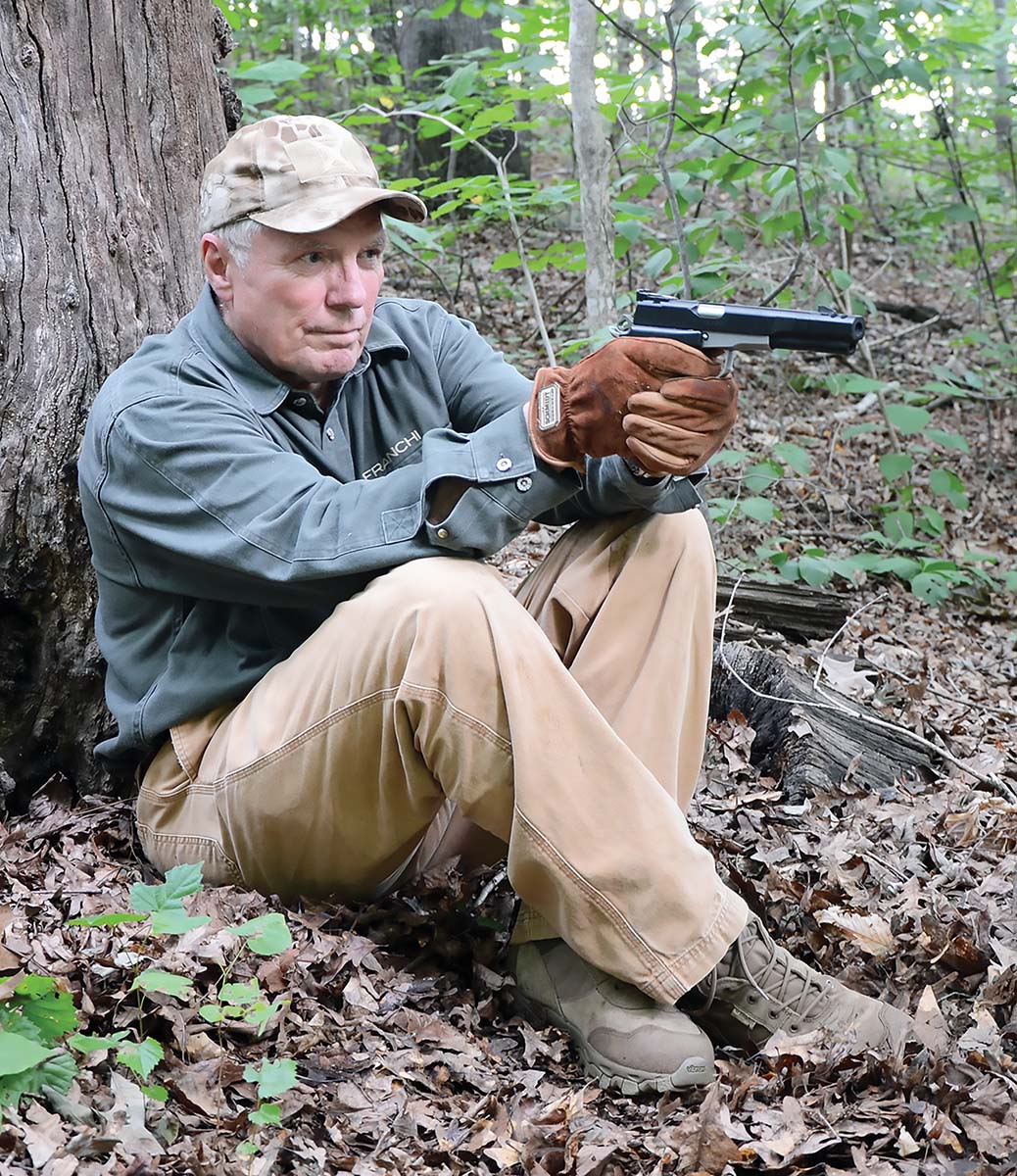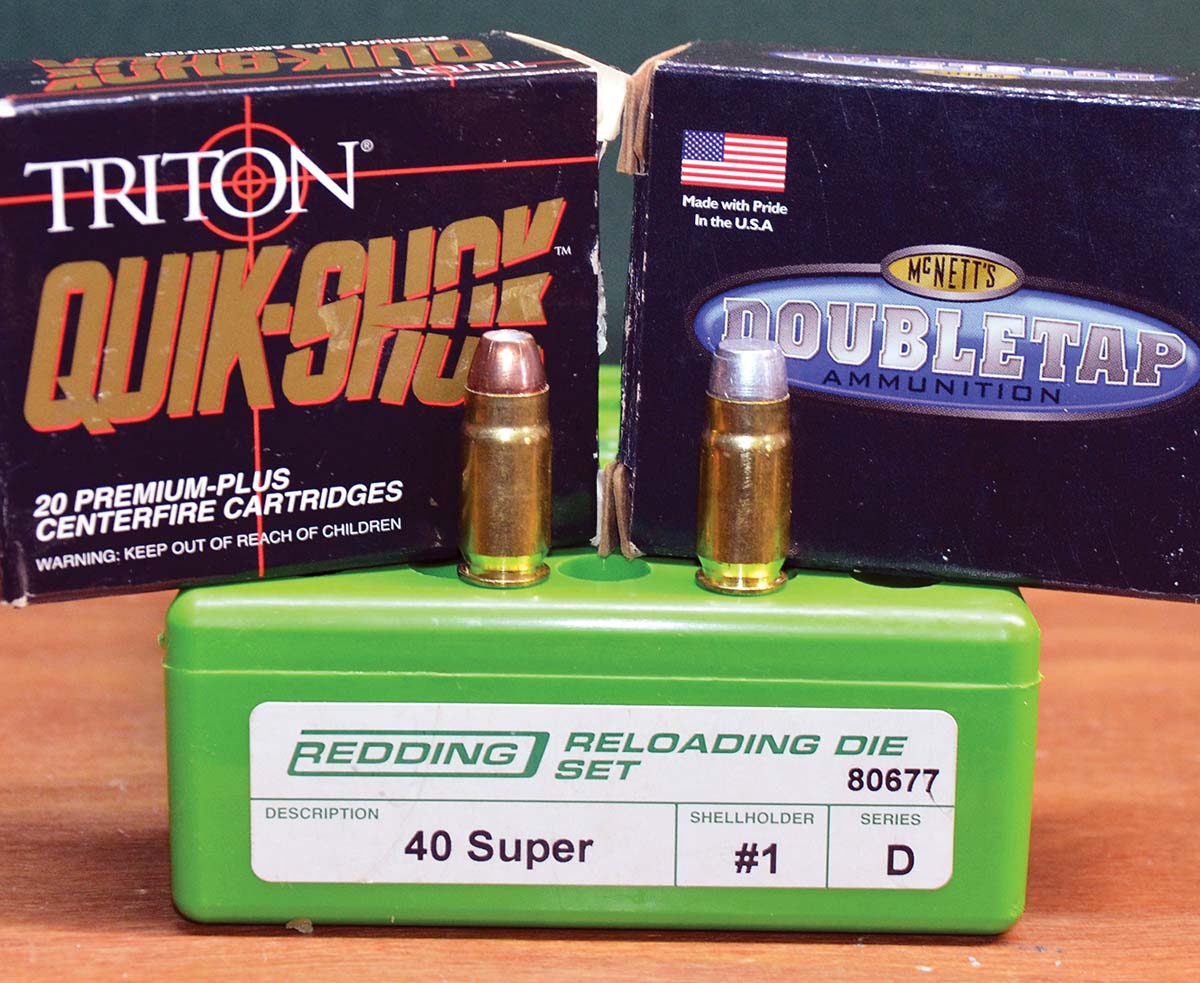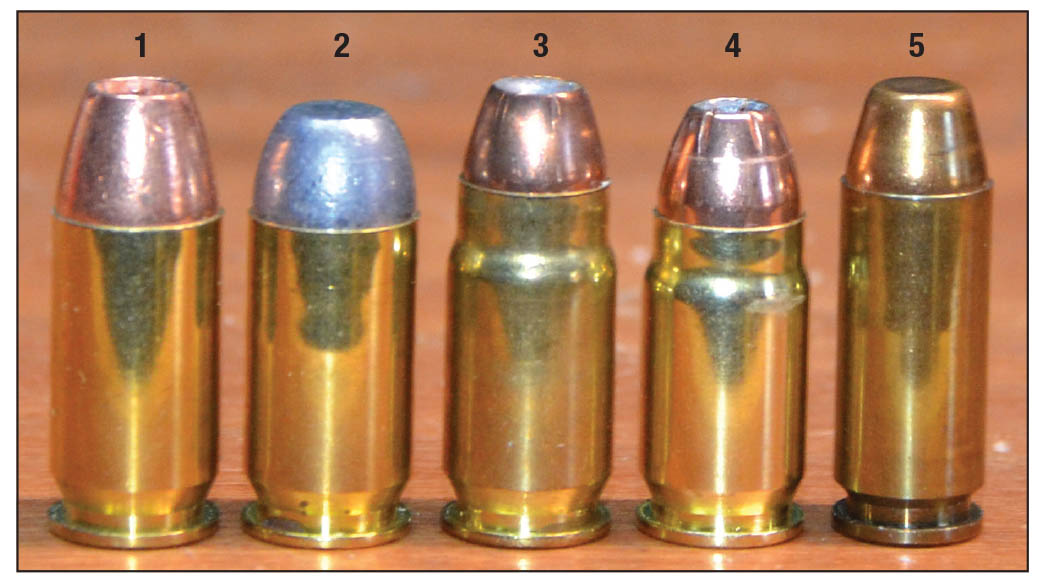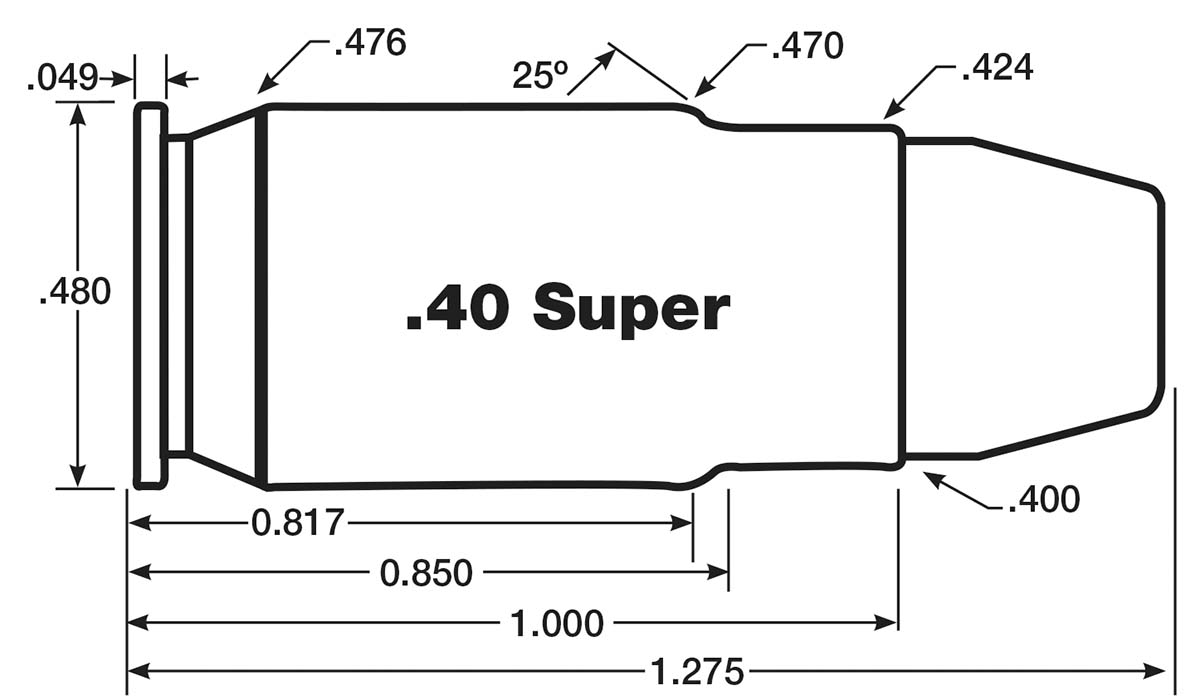The 45 Super was featured in this column in
Handloader (No. 339, August, 2022) and some of the information is included here because it blazed the trail that led to the development of the 40 Super. The 45 Super was created during the 1980s by Dean Grennell, who for many years was the managing editor and reloading columnist for
Gun World magazine. He was also a good friend. Dean’s goal was to come up with a more powerful cartridge than the 45 ACP, one that could be safely fired in specially prepared 1911 pistols chambered for that cartridge. The project began with the 45 Winchester Magnum case, which is basically a longer version of the 45 ACP case, but with a combination of thicker web and wall along with greater hardness, allowing it to safely handle higher chamber pressure. Grennell initially shortened it to 45 ACP length but eventually switched to the 451 Detonics Magnum case, which reduced the amount of case shortening required with no sacrifice in strength.

Layne’s custom Colt Double Eagle was originally built to handle heavy 45 ACP handloads for bowling pin competition. Later installing a heavier recoil spring made it equally suitable for shooting 45 Super handloads. Making the gun suitable for the 40 Super cartridges was no more difficult than installing a Bar-Sto five-inch barrel with a full-support chamber and full-profile compensator. Switching from one of the three options to another takes less than a minute.
While the 45 Super proved to be considerably faster than +P loadings of the 45 ACP, making the cases was time-consuming. If not for the eventual availability of 45 Super cases from Starline, it would have become a forgotten cartridge. According to information received from
Starline Brass, the 45 Super case is harder, more dense and stronger than the 45 ACP +P case and is of the same construction as the 460 Smith & Wesson (S&W) Magnum case. The many thousands of 45 Super cases sold by Starline each year are proof of the lasting popularity of Dean Grennell’s cartridge.
Triton Cartridge Company was the first to offer 45 Super ammunition with a maximum chamber pressure of 28,000 pounds per square inch (psi). Bullet options ranged from a 165-grain jacketed hollowpoint (JHP) at 1,450 fps to a 230-grain JHP at 1,150 fps. Triton is no longer in business, but Buffalo Bore Ammunition and Doubletap Ammunition offer several 45 Super loadings. The Buffalo Bore load with a 255-grain hard-cast, flatnose bullet at 1,080 feet per second (fps) is intended for bone-crushing penetration on bears.

Starline 40 Super Cases shown here are pocketed to handle the Small Pistol and Small Rifle primers. Due to the harder cup of the Small Rifle primers, they are recommended by the developer of the cartridge.
Moving now to the 40 Super, it was introduced in 1994. Inspired by the success of the 45 Super along with the introduction of the 10mm Auto in 1989, the cartridge was developed by Fernando Coelho of Triton Cartridge Company. It was developed, with assistance from Tom Burczynski, whose name is synonymous with Hydra-Shok, Starfire and Quik-Shok bullets. At first glance, the 40 Super case might appear to be the 45 Super case necked down for 10mm bullets, but while collaborating with Starline, Coelho came up with a longer case that would hold more powder while allowing the same overall cartridge length as the 45 Super and the 45 ACP. There was one other significant difference. The first cases were pocketed for large pistol primers, but primer flow became troublesome due to the cartridge’s 37,500 psi maximum operating pressure. The problem was solved by switching to cases pocketed for small rifle primers, but while Small Pistol primers could be used, they were not recommended.

Triton Cartridge Company, which developed the 40 Super, is no longer in business, but several loadings of the cartridge are available from Buffalo Bore and Doubletap. The two Doubletap loads shown here are Nosler 180-grain JHP at 1,400 fps (left) and 200-grain hard cast wide flatnose with a gas check at 1,300 fps (right).
Due to the high pressure generated by the 40 Super, I strongly believe nothing less than an all-steel, top-quality 1911 pistol should be used. I love the old war horse and used several custom versions during my years of competing in the open-class United States Practical Shooting Association (USPSA) competition. When designing it, John Browning gave it a two-piece feed ramp with its lower section on the frame and its upper section on the barrel. That leaves quite a bit of the rear of a chambered cartridge hanging in mid-air with no support, and when a cartridge fires, the only thing separating the shooter from propellant gas under high pressure is a thin wall of brass. It is a satisfactory design as long as good 45 ACP factory ammunition and factory-equivalent handloads in cases that are in good shape are used. For many years, the 1911 was my favorite handgun for competition and personal defense, so I am being overly critical. As an additional note of possible interest, the barrel of the Hi-Power pistol in 9mm Luger, designed by John Browning and Dieudonne Saive, has a fully-supported chamber.

Due to the high operating pressures of the 40 Super, the installation of a Bar-Sto barrel with a chamber that supports the cartridge back to the front of its extraction groove is highly recommended.
While the intent behind the 40 Super was to use it in 1911 pistol barrels of original design, I believe it is best to use a full-support barrel with an extended feed ramp. I highly recommend a Bar-Sto barrel of that type. Installing the barrel in a 1911 pistol requires machining a mortise in the frame for the feed ramp, so it is a job best left for a qualified pistolsmith specializing in 1911 pistols. Years ago, bowling pin competition was popular in my area, and I used a Colt Double Eagle in 45 ACP tricked out by a local pistolsmith who did excellent work. Among other nice things, it has a Nowlin 5-inch barrel with a full-support chamber and a full-profile compensator. With a bit heavier recoil spring installed, the Double Eagle later proved to be ideal for the 45 Super, and soon after the 40 Super came along, it got a Bar-Sto barrel, also with a full-support chamber and full-profile compensator. The two barrels for my Double Eagle are easily interchanged, and standard 45 ACP magazines reliably handle the two cartridges.
The correct recoil spring weight for the 40 Super will vary from gun to gun, but 26 pounds is a good place to start for a 5-inch barrel with no compensator. If fired cases land more than six feet away, try a 28-pound spring. If a gun refuses to eject cases normally, go lighter in 2-pound decrements until it does. The Wolff Recoil Calibration Pak from Brownells contains several springs varying in weights, and is less expensive than buying the springs individually. Due to the increase in slide velocity, some guns function more reliably with Wolff extra-power springs installed in their magazines.

The only difference between the 45 ACP case and the 45 Super case is the latter is made considerably stronger to handle higher chamber pressure. That cartridge inspired the later development of the 40 Super, which is basically a lengthened and necked-down version of the strong 45 Super case. The 40 Super case holds more powder than the 400 Corbon and 10mm Auto cases and is loaded to the same pressure as the 10mm Auto. Unprimed cases for five cartridges are available from Starline: (1) 45 ACP cartridge, (2) 45 Super cartridge loaded by Buffalo Bore, (3) 40 Super cartridge, (4) 400 Corbon cartridge and (5) 10mm Auto cartridge.
Using a heavier recoil spring alone for the 40 Super works fine, but if the gun will be shot frequently with full-power loads, increasing the mass (weight) of reciprocating parts reduces wear and tear. Using a 6-inch barrel and longer slide was a solution used by Springfield Armory back when that company was building 1911-A1 Long Slide pistols in 45 Super. Adding a heavy, no-bushing barrel further modifies the recoil impulse, as does attaching a compensator to the barrel.
The 40 Super is not to be confused with the 400 Corbon developed by Corbon Ammunition of Sturgis, South Dakota. Whereas it is a strengthened 45 ACP case necked down with an extremely short neck, the 40 Super case is close to an inch long. In addition to using heavier powder charges, its longer neck exerts greater tension on a seated bullet, making it less likely to be driven more deeply into the case during feeding in the 1911 pistol. The 400 Corbon pretty much duplicates 10mm Auto performance while the 40 Super exceeds it. Starline also makes 400 Corbon cases. The 40 Super is an excellent cartridge for those who wish to hunt deer and feral hogs with a 1911 pistol.






.jpg)
.jpg)


